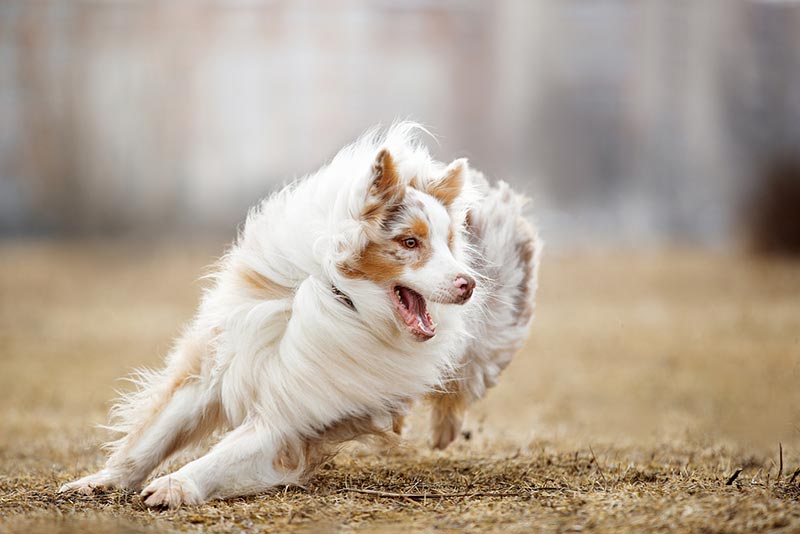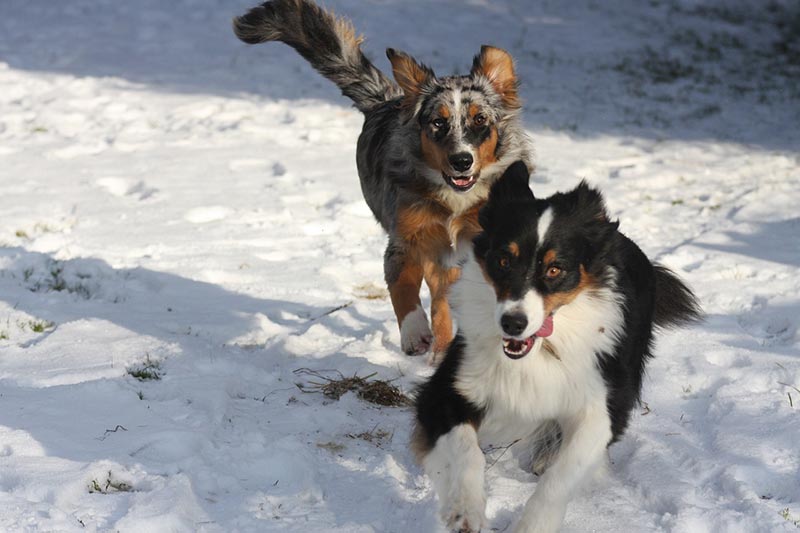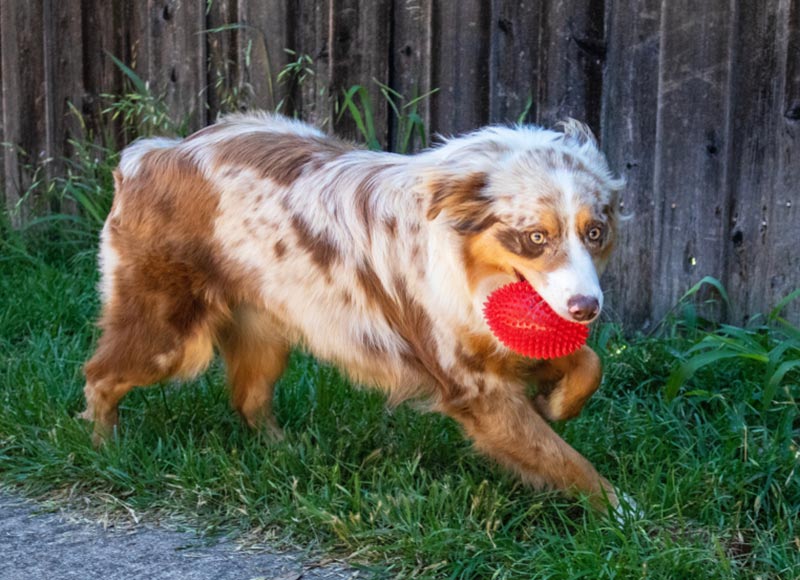How Fast Can My Australian Shepherd Run? Tips & Comparison
By Jessica Kim
Updated on

Australian Shepherds are very athletic dogs that were bred to work long days as herding dogs. They’re built to herd and direct sheep and cattle and can run anywhere between 30-35 miles per hour (mph). While Australian Shepherds aren’t the fastest dog breed, they still run faster than most breeds.
We’ll take a look at just how athletic Australian Shepherds are and how they compare with other animals. We also have information on how to provide sufficient exercise for these dogs.
Australian Shepherd Compared to Other Animals
Australian Shepherds were bred for agility and endurance. You can usually find this breed competing in dog sports, like agility, flyball, and herding. These dogs are also extremely intelligent and excel in obedience competitions.
While Australian Shepherds are fast and can run at speeds of up to 35 mph, several other dog breeds can run much faster than them. The fastest dog breed is the Greyhound, which can run up to 45 mph.
Here’s how Australian Shepherds compare with other animals:
| Animal | Speed |
| Australian Shepherd | 30-35 mph |
| Sheep | 20-25 mph |
| Cow | 20-25 mph |
| Horse | 27-55 mph |
| Domestic Cat | 25-30 mph |
| Cheetah (fastest land animal) | 50-80 mph |

How to Exercise an Australian Shepherd
Now that we know how fast and athletic Australian Shepherds can be, it’s safe to assume that mere walks around the neighborhood won’t be sufficient for these dogs. They need to run around and expend all their energy to prevent boredom and the development of challenging behaviors, like aggression and destructiveness.
Running with your Australian Shepherd can be a fun bonding exercise. However, it may not be sufficient for your dog because it’s capable of running much faster for longer. Here are some other activities you can do with your Australian Shepherd to meet its exercise needs.
Play Fetch or Frisbee in a Fenced Area
Australian Shepherds thrive in homes with large backyards where they can run around freely. Training your dog to fetch balls or catch frisbees is an excellent way to motivate your dog to run. If you don’t have a big yard, you can take your dog to a dog park or beach.
Just keep in mind that your dog may not enjoy socializing with other dogs. So, it can be helpful to remember less busy times and go to these places when there are fewer people and dogs around.

Participate in Dog Sports
Plenty of dog sports include running and obedience training. Australian Shepherds excel in agility training and running through courses. If you don’t live near a dog course, you can always build your own or choose a different sport.
Disc dog and dock jumping are also sports that require agility and stamina. If you live in urban and suburban areas, you can try looking for the closest herding trial training taking place near you. This sport is perfect for Australian Shepherds as they get to compete in what they were originally bred to do.
Engage in Outdoor Activities
Your Australian Shepherd will greatly appreciate spending a day outside with you. You can plan an all-day hiking trip in a dog-friendly area. Some Australian Shepherds may enjoy swimming and will enjoy going to a dog beach.
Conclusion
Australian Shepherds are fast and athletic dogs, requiring daily exercise that includes running. Insufficient exercise will eventually lead to destructive behaviors and a poor quality of life. Fortunately, there are plenty of dog sports and activities that you can do with your Australian Shepherd to ensure that it gets all the physical and mental exercise that it needs.
Featured Image Credit: Vivienstock, Shutterstock












